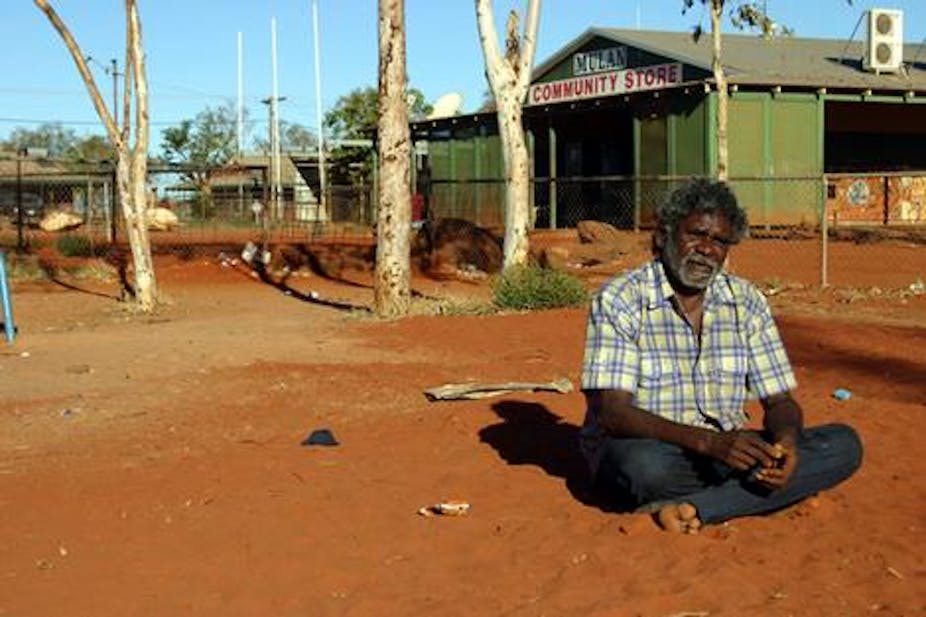The National Disability Insurance Scheme (NDIS) presents an overwhelming opportunity to revolutionise the care and support given to Indigenous people. But the equity of the scheme is already at risk, with treasurer Joe Hockey yesterday warning the scheme will have to be made more efficient.
Our research for the NDIS this year revealed that people living in the remote communities face a complex web of system failures spanning health care, disability services, housing and infrastructure.
Without political will and bi-partisan commitment from all tiers of government to address the chronic gaps in infrastructure and health-care delivery, the NDIS scheme can’t deliver on its promises in very remote Indigenous communities.
Current shortcomings
We investigated acquired brain injury (ABI) within Indigenous populations. Talking with people living on Cape York and in the Northern Territory, we were shocked by the low level of understanding of the ABI condition – by carers in remote communities, through to highly qualified medical practitioners.
We found no reliable, culturally appropriate instruments to measure and assess the extent of one’s impairment, without which eligibility for the NDIS would be difficult to establish. This could prevent thousands from benefiting from the scheme.
The 2010 National Prisoner Health census found 41% of female and 38% of male prison entrants reported having sustained at least one head injury that led to loss of consciousness. Knowing that Indigenous people are over-represented in the prison population, many live with an ABI.
People with ABIs rarely receive early intervention treatment; their first contact with the justice system is often in their home communities when their behaviour becomes unmanageable and anti-social, threatening the safety of others. They’re met by police, are charged and go to court. They may receive a community service order but if they breach its conditions they return to court, receive a jail sentence, and risk aggravated assault in jail causing further injury to the brain. And so the cycle continues.
Of course, not all people with an ABI are problematic to carers and communities. In every place we visited, we were told of the vital importance of caring for people, on country. But the burden of care is so high in places where infrastructure and services are chronically deficient.

Current funding available to service providers is demonstrably inadequate and they cannot meet the needs of their clients. The very real costs of working in remote communities – such as freight and transport imposts – are inadequately factored in to current funding allocations, leaving people reliant on the aged-care sector.
The fly in/fly out “outsider” service delivery model is also problematic, as it undermines local trust and engagement. And it’s difficult to retain allied health and disability care workers, leaving current service provision firmly centred on low-level attendant care.
As a result, access to community-based overnight or extended care, respite, rehabilitation, physiotherapy, speech therapy, specialist services for sensory impairments, paediatric, life-skills programs and in-home support are all commonly missing from the suite of services that should be available to all Indigenous people, where and when they need it.
The state of housing presents a range of problems. Overcrowding and the lack of hot water, refrigeration and laundry facilities are realities for many. Extreme weather events cut-off whole communities and make it impossible to access homes.
The sub-standard public infrastructure makes excursions from homes extremely difficult. Daily activities such as shopping and attending ceremonies, church or other cultural and sporting events are not possible without significant reliance on family carers and friends.
Delivering a system that works
Australian governments have committed to a host of policies and agreements to prioritise the provision of culturally secure services, as enjoyed by every other Australian. We wonder how the NDIS system of choice will fare any better without concerted parallel efforts to bridge the gaps in health service provision, housing and infrastructure.
According to the First Peoples Disability Network’s Ten-point plan for the implementation of the NDIS in Aboriginal communities, Indigenous people commonly have had little or no experience in self-managing funds and this challenge must be well understood and recognised.

The reality of market choice requires access to information, but the relative isolation of the communities means that people living with disabilities are exposed to their own situation only and are not able to compare their experiences with the experiences of others. The role the scheme plays as an information broker – with training for staff to do this effectively – will be a measure of its success as a social reform.
Training is crucial. A workforce with culturally competent skills sets are vital and should be led at every opportunity by teams of Indigenous staff. Modifications to the mainstream system must include:
- culturally acceptable health and assessment practices
- information translated into language
- funding models that can be adapted to people’s circumstances taking into account the availability (or lack) of services
- health promotion to raise awareness of disabilities, driven by (not for) communities themselves.
The NDIS could be a catalyst to bridge the gaps between service provision and community infrastructure with funding from support packages paid to eligible participants. But this should be parallel to, and not at the expense of, state and federal obligatory spending on essential services.
The success of the NDIS will surely be measured by how the reforms benefit Indigenous people with disabilities: Australia’s most in need. Without political will and adequate investment in communities, people with disabilities will be required to leave their homes to spend their support package; or miss out entirely.

